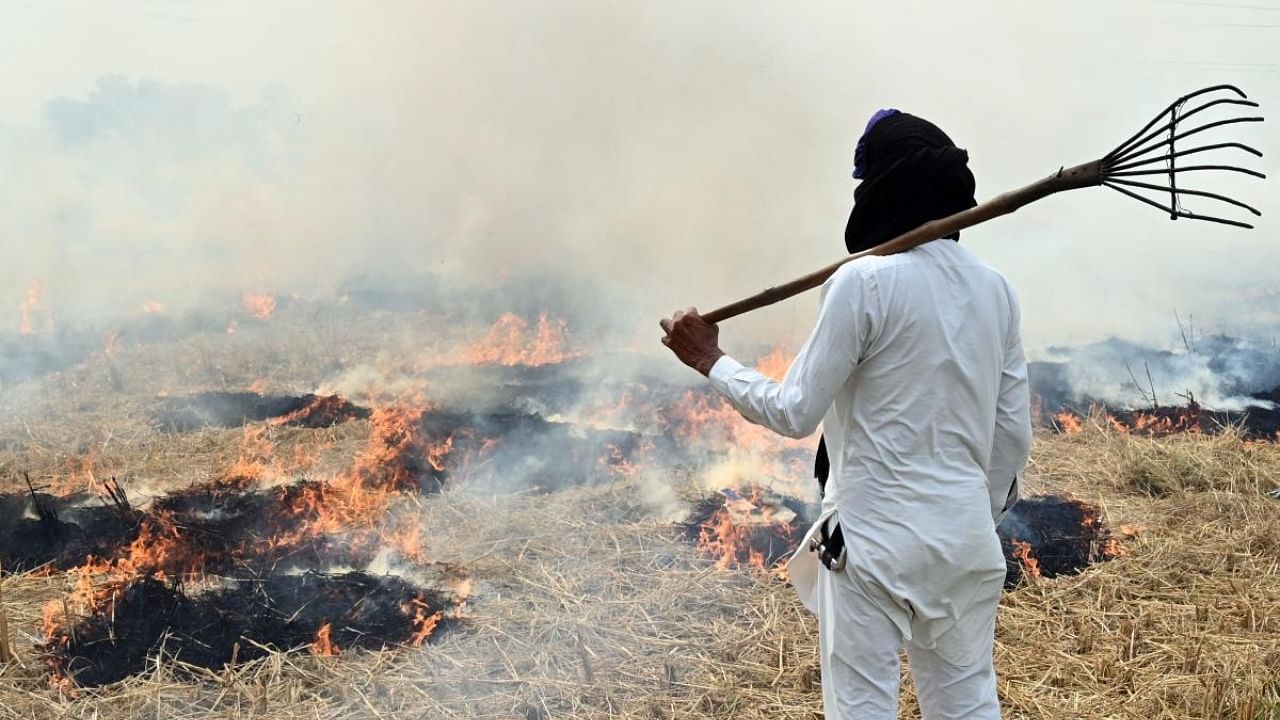
The share of stubble burning in Delhi PM2.5 pollution rose to 26 per cent on Sunday, the highest this year so far, amid an increase in farm fires and favourable conditions for transport of emissions to Delhi-NCR.
On Saturday, farm fires accounted for 21 per cent of the PM2.5 pollution in the national capital.
PM2.5 are fine particles that are 2.5 microns or less in diameter and can travel deep into the respiratory tract, reaching the lungs and entering the bloodstream.
The contribution of stubble burning to Delhi's PM2.5 pollution remained low (up to 7 per cent) till Friday due to a prolonged rain spell in early October and slow transport-level winds which were not strong enough to carry smoke from farm fires to the national capital.
On Diwali (October 24), stubble burning contributed five to eight per cent to the total PM2.5 pollution in Delhi.
The share of farm fires in Delhi's PM2.5 pollution was 25 per cent on Diwali in 2021, 32 per cent in 2020 and 19 per cent in 2019.
The Indian Agricultural Research Institute (IARI) reported 1,761 farm fires in Punjab on Sunday, 1,898 on Saturday, 2,067 -- the highest so far this season -- on Friday and 1,111 on Thursday. It logged 112 and 43 cases of stubble burning in Haryana and Uttar Pradesh, respectively, on Sunday.
The Commission for Air Quality Management had on Thursday said the increased incidents of stubble burning in Punjab this year "is a matter of serious concern".
According to satellite remote sensing data, up to October 24, only about 39 per cent of the sown area in Punjab had been harvested and thus the rising number of fire events was an alarming situation, it said.
Along with unfavourable meteorological conditions, paddy straw burning in adjoining states is a major reason behind the alarming spike in air pollution levels in the national capital in October and November.
Farmers set their fields on fire to quickly clear off the crop residue before cultivating wheat and vegetables.
According to the Indian Agricultural Research Institute, Punjab reported 71,304 farm fires between September 15 and November 30 last year and 83,002 farm fires in the corresponding period in 2020.
Last year, the share of farm fires in Delhi's PM 2.5 pollution peaked to 48 per cent on November 7.